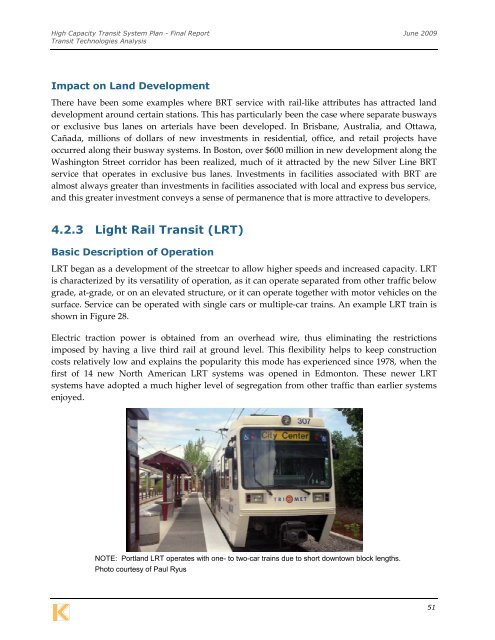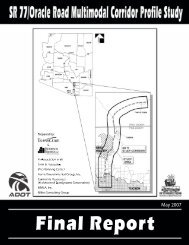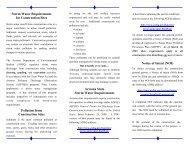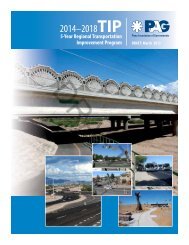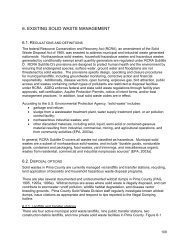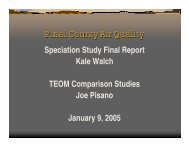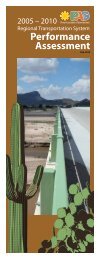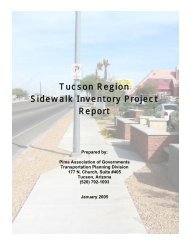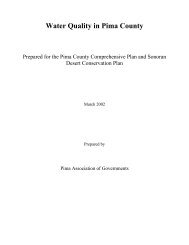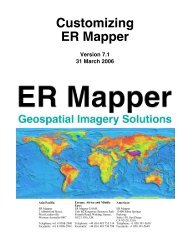Final Report - Pima Association of Governments
Final Report - Pima Association of Governments
Final Report - Pima Association of Governments
You also want an ePaper? Increase the reach of your titles
YUMPU automatically turns print PDFs into web optimized ePapers that Google loves.
High Capacity Transit System Plan - <strong>Final</strong> <strong>Report</strong> June 2009<br />
Transit Technologies Analysis<br />
Impact on Land Development<br />
There have been some examples where BRT service with rail‐like attributes has attracted land<br />
development around certain stations. This has particularly been the case where separate busways<br />
or exclusive bus lanes on arterials have been developed. In Brisbane, Australia, and Ottawa,<br />
Cañada, millions <strong>of</strong> dollars <strong>of</strong> new investments in residential, <strong>of</strong>fice, and retail projects have<br />
occurred along their busway systems. In Boston, over $600 million in new development along the<br />
Washington Street corridor has been realized, much <strong>of</strong> it attracted by the new Silver Line BRT<br />
service that operates in exclusive bus lanes. Investments in facilities associated with BRT are<br />
almost always greater than investments in facilities associated with local and express bus service,<br />
and this greater investment conveys a sense <strong>of</strong> permanence that is more attractive to developers.<br />
4.2.3 Light Rail Transit (LRT)<br />
Basic Description <strong>of</strong> Operation<br />
LRT began as a development <strong>of</strong> the streetcar to allow higher speeds and increased capacity. LRT<br />
is characterized by its versatility <strong>of</strong> operation, as it can operate separated from other traffic below<br />
grade, at‐grade, or on an elevated structure, or it can operate together with motor vehicles on the<br />
surface. Service can be operated with single cars or multiple‐car trains. An example LRT train is<br />
shown in Figure 28.<br />
Electric traction power is obtained from an overhead wire, thus eliminating the restrictions<br />
imposed by having a live third rail at ground level. This flexibility helps to keep construction<br />
costs relatively low and explains the popularity this mode has experienced since 1978, when the<br />
first <strong>of</strong> 14 new North American LRT systems was opened in Edmonton. These newer LRT<br />
systems have adopted a much higher level <strong>of</strong> segregation from other traffic than earlier systems<br />
enjoyed.<br />
NOTE: Portland LRT operates with one- to two-car trains due to short downtown block lengths.<br />
Photo courtesy <strong>of</strong> Paul Ryus<br />
51


